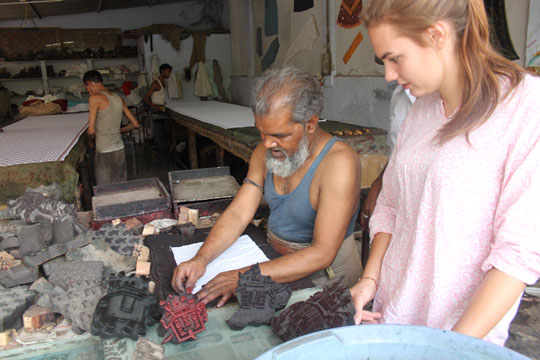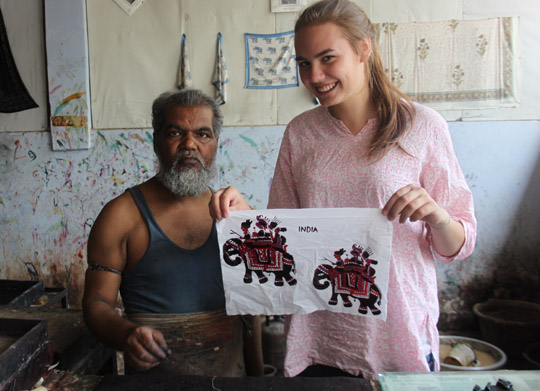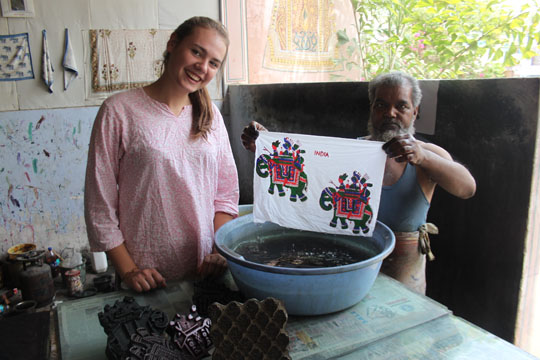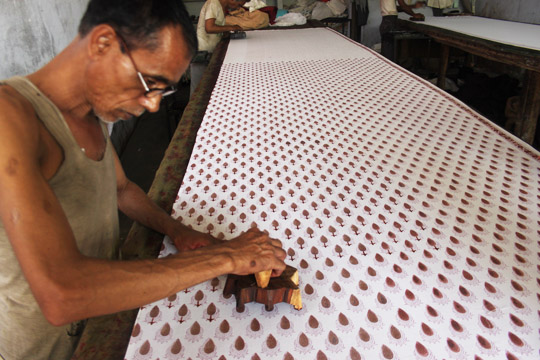 Block printing is a form of dying and coloring a fabric using wooden blocks. India is one of the largest manufacturers and exporters of block printed fabric in the world. Block printing craftsmen use wooden or metal blocks to create beautiful designs. Hand block printing is a craft that is handed down through generations. Just now it is in the forefront of the fashion scene today and the ancient craft has seen a major revival over the last two decades.
Block printing is a form of dying and coloring a fabric using wooden blocks. India is one of the largest manufacturers and exporters of block printed fabric in the world. Block printing craftsmen use wooden or metal blocks to create beautiful designs. Hand block printing is a craft that is handed down through generations. Just now it is in the forefront of the fashion scene today and the ancient craft has seen a major revival over the last two decades.
Das traditionelle, indische „Block-Printing“ ist eine Drucktechnik, bei der verschiedenste Motive mit geschnitzte Holzplatten oder -blöcken auf Textilien gedruckt werden. Indien ist einer der größten Hersteller und Exporteure weltweit von solchen handbedruckten bedruckten Textilien. Mittels mehrere Holz- oder auch Metallblöcke werden die Designs, auch mehrfarbig in Handarbeit hergestellt. „Block-Printig“ ist ein Handwerk, das von Generation zu Generation weitergegeben wird. Momentan genießt diese Drucktechnik weltweit wieder große Begeisterung und das alte Handwerk hat in den letzten Jahren einen großen Aufschwung erlebt.
 |
| Block printing craftsmen use wooden or metal blocks to create beautiful designs. |
The fabric to be printed is first washed free of starch. If tie-dyeing is required, this is done before the printing process. Incase fabric is dyed, it is washed thereafter, to remove excess color. It is dried in the sun. Then the fabric is then stretched over the printing table and secured with pins. See very first picture above.
Color is mixed separately and kept ready. So are the blocks. The blocks are made of teak wood and hand-carved. They are soaked in oil for 10-15 days to soften the timber.
The color are made of special natural pigments and each is kept in a tray which rests on another tray that contains a liquid made of glue and pigment binder. This gives the color a soft base and permits even spreading of color on the block.
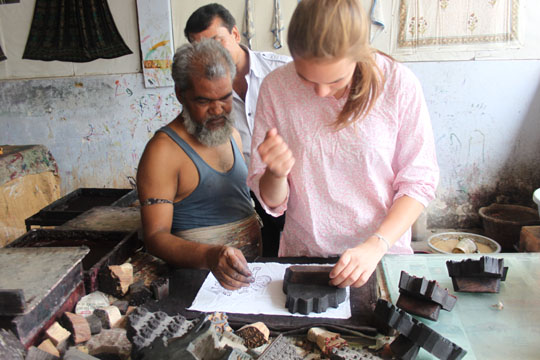
When the block is applied to the fabric, it is slammed hard with the fist on the back of the handle so that a good impression may register.

A point on the block serves as a guide for the repeat impression, so that the whole effect is continuous and not disjoined. The outline printer is usually an expert because he is the one who leads the process.
Thereafter, it is washed in water and dried in the sun. Ironing is the last stage.
 |
| blocks for a multiple color design |
If it is a multiple color design the second printer dips his block in color again using the point or guide for a perfect registration to fill in the color. The third color if existent follows likewise. Skill is necessary for good printing since the colors need to dovetail into the design to make it a composite whole. A single color design can be executed faster, a double color takes more time and multiple color design would mean additional labor and more color consumption.
Thanks again to Channi Carpets & Textiles for this wonderful workshop!

